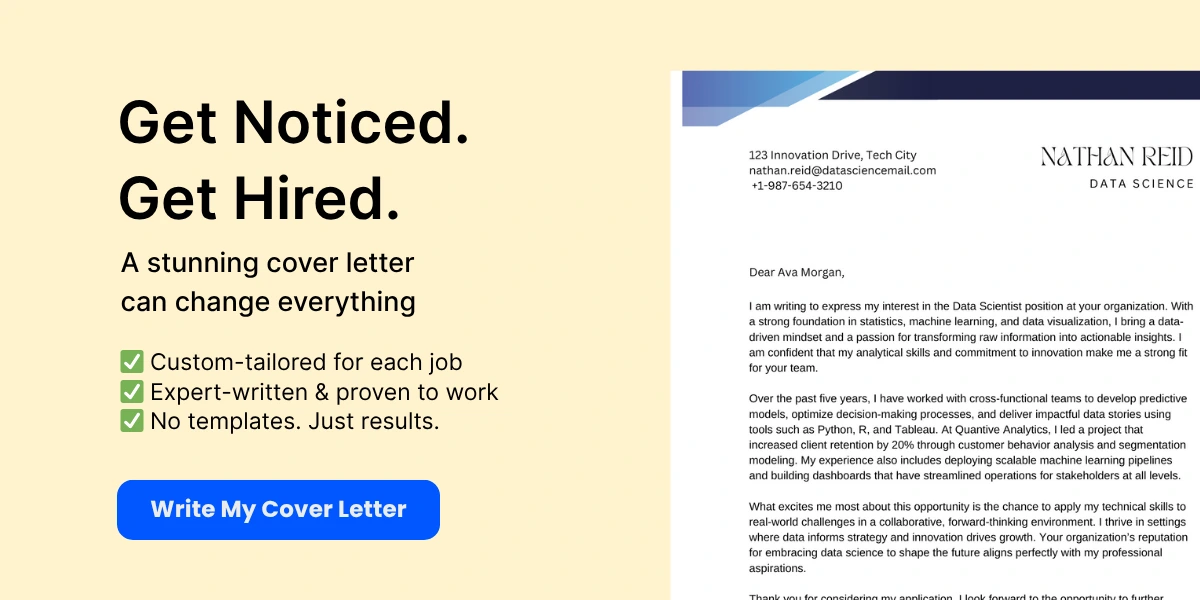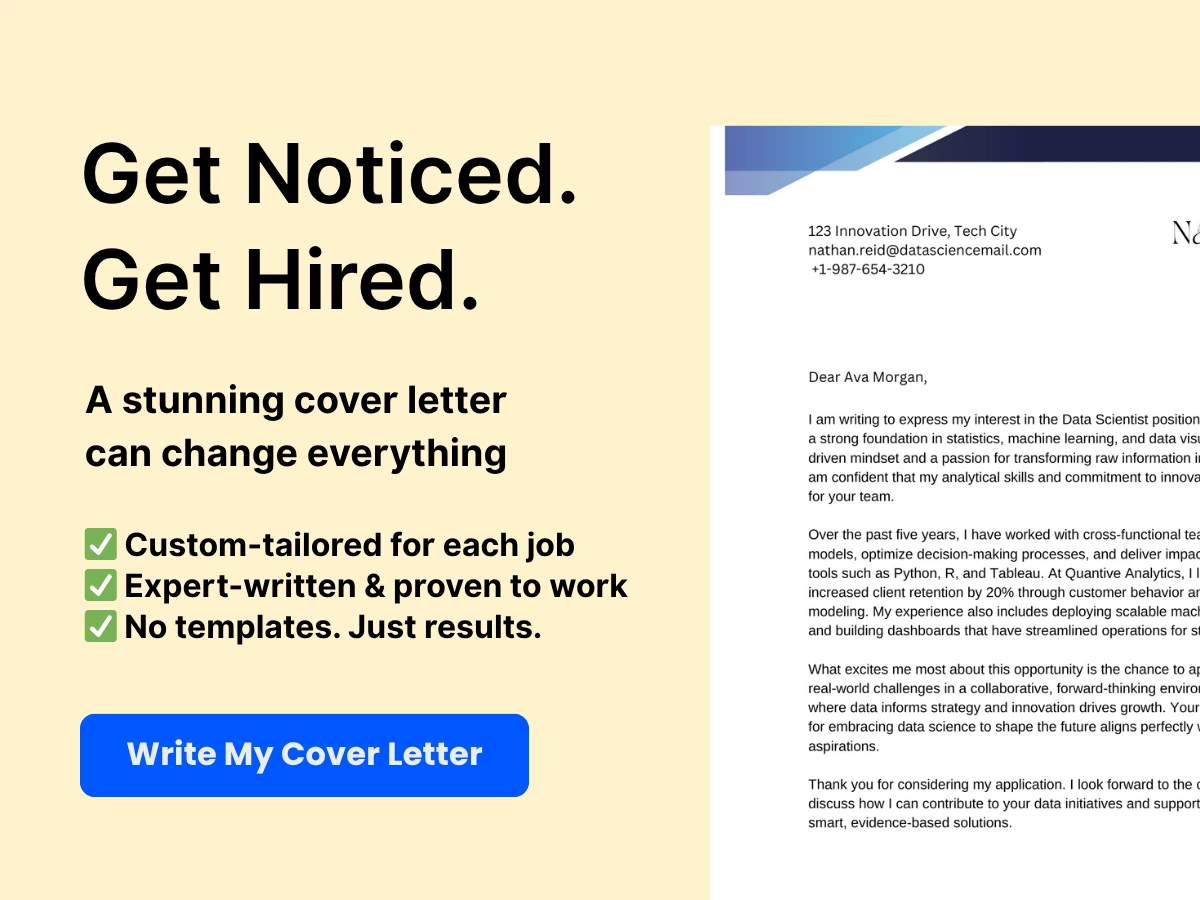As a substitute teacher, crafting a solid resume is crucial for success in the field. This complete writing guide will cover everything you need to know to create a standout Substitute Teacher Resume.
A well-crafted Substitute Teacher Resume can be the key to landing new assignments and establishing a successful career. It serves as your first impression on potential employers and demonstrates your qualifications, experience, and skills as a substitute teacher.
Definition and Purpose of Substitute Teacher Resume
A Substitute Teacher Resume is a document crafted by individuals looking for specific assignments as substitute teachers. The purpose is to showcase their experience, qualifications, certifications, and skills to potential employers in the education industry. The resume outlines relevant information about a substitute teacher’s experience that aligns with the school district’s needs for short-term teaching positions.
Differences between Regular Teacher and Substitute Teacher Resume
A Regular Teacher Resume and a Substitute Teacher Resume serve different purposes and highlight different types of information. In a Regular Teacher Resume, the focus is on academic accomplishments, long-term teaching experience, and professional development. It is designed to land full-time teaching positions in a specific subject area or grade level.
On the other hand, Substitute Teacher Resume is designed to land ad-hoc assignments in schools district on an as-needed basis. It should emphasize the substitute teacher’s versatility and the ability to adapt quickly to the new classroom and curriculum.


Substitute Teacher Resumes should include the relevant certifications, including substitute teaching certification, teaching license, or Emergency Certified Substitute Teacher status. In contrast, a Regular Teacher Resume includes a teacher’s license and relevant endorsements in the specific teaching area.
Another difference is the level of detail regarding experience. A Regular Teacher Resume includes detailed descriptions of previous roles and teaching accomplishments, often including information regarding tenure and responsibilities beyond the classroom. Conversely, Substitute Teacher Resumes focus on relevant teaching experience, such as substituting in a variety of classrooms and subject areas.
Finally, the language used in a Substitute Teacher Resume is compact and straightforward. It should be easy and quick to read, so the district can determine in seconds whether or not to call for an interview. In contrast, a Regular Teacher Resume is written in a more detailed, formalized, and professional tone, inviting the reader to take their time to understand the scope of the teacher’s accomplishments.
Substitute Teacher Resumes serve a unique purpose in the education industry. Crafting a well-designed, targeted resume that highlights the skills and experiences valued by school districts is critical to success as a substitute teacher.
Format and Structure Guidelines
As a substitute teacher, your resume should highlight your experience and qualifications in education. To create a clear and concise resume, follow these format and structure guidelines.
A. General Resume Structure
Start with a strong header that includes your name, contact information, and a professional summary or objective statement. Follow this with sections for education, work experience, skills, and certifications.


Keep your resume to one or two pages, and use clear and easy-to-read fonts. Use bullet points to organize information and make it easy to skim.
B. Substitute Teacher Specifics
When it comes to a substitute teacher resume, there are some specific requirements to keep in mind.
1. Substitute Teacher Resume Length
Since your work experience may vary depending on the schools and grades you have taught, your resume length may vary as well. It is recommended to keep your resume to one or two pages.
2. Information to Include
Make sure to include your education, any certifications, and relevant work experience. Include specific details about what grades and subjects you have taught. Highlight any experience working with students who have special needs, such as autism or learning disabilities.
3. Sections to Prioritize
When organizing your substitute teacher resume, prioritize the sections that will showcase your experience and qualifications for the job. Start with your education and work experience, then move onto any certifications or relevant skills you have.


For substitute teaching, it can be helpful to include a section for personal skills, such as flexibility, adaptability, and strong classroom management skills.
4. Tips and Tricks for Better Formatting
To make your resume stand out, use a clean and simple layout. Use bullet points to make your information easy to read, and keep your font size between 10 and 12 points.
Use a combination of bold, italic, and underlined text to highlight important information, such as job titles or certifications.
Finally, make sure to proofread your resume for any errors or typos. Have a friend or colleague review it as well to catch any mistakes you may have missed.
Following these format and structure guidelines can help you create a professional and effective substitute teacher resume.
Keywords and Qualifications
When it comes to your resume, including relevant keywords can make all the difference. Many companies now use applicant tracking systems (ATS) to filter resumes before they even make it to a human recruiter, so optimizing your resume with relevant keywords can help ensure that it makes it through to the next step of the hiring process.
A. Keyword Optimization for Resume
1. Importance of Keywords
Using the right keywords on your resume can help you stand out from other candidates and can make it easier for recruiters to see how your experience matches up with their job requirements. Including the right keywords can also improve your chances of passing through an ATS and getting noticed by a human recruiter.


2. How to implement keywords
To implement keywords effectively, start by researching job descriptions for the roles you’re interested in. Look for common job duties, required skills and certifications, and industry jargon. Then, incorporate those keywords into your resume in a way that feels natural and accurate.
B. Relevant Certifications and Qualifications
1. Importance of Credentials
If you have relevant certifications or qualifications, including them on your resume can demonstrate to recruiters that you have the skills and knowledge necessary to succeed in the role. Certain industries, such as education, often require specific credentials, so make sure to highlight those if you have them.
2. How to Highlight Them
When highlighting your credentials, make sure to list them in a prominent location on your resume, such as in a certifications or qualifications section or in the education section. Be sure to include the name of the credential, the issuing organization, and the date it was obtained. You can also include any relevant coursework or training that you completed as part of earning the credential.
Optimizing your resume for keywords and highlighting your relevant credentials can make you a more attractive candidate to potential employers. By incorporating these best practices into your resume writing, you can increase your chances of landing an interview and ultimately getting the job.
Content of Substitute Teacher Resume
When it comes to crafting a successful substitute teacher resume, there are several key sections that are essential. These include personal information and an objective statement, professional experience, and education and training.
A. Personal Information and Objective Statement
Your resume should begin with your personal information, including your name, address, phone number, and email address. You may also want to include your LinkedIn profile, if you have one. In addition, it’s a good idea to include an objective statement that highlights your goals and objectives for seeking a substitute teaching position.


Your objective statement should be brief and to the point, no more than a sentence or two. It should clearly state what you are looking for in a substitute teaching role, and what you can bring to the table. Avoid generic statements that could apply to any job, and tailor your objective statement to the specific requirements of the position you are applying for.
B. Professional Experience
The professional experience section is arguably the most important part of your substitute teacher resume. This is where you highlight your teaching experience and demonstrate that you have the skills and expertise necessary to succeed in the role.
1. Best practices for presenting experience
When presenting your professional experience, it’s important to follow best practices for resume writing. This includes using action verbs to describe your accomplishments, quantifying your achievements whenever possible, and using bullet points to make your experience easy to read and digest.
Make sure to highlight the most relevant experience first, and include detailed descriptions of your teaching responsibilities, work with students, and any other relevant experience.
2. Tailoring experience for the role of a Substitute Teacher
In addition to following best practices for resume writing, it’s important to tailor your experience to the specific requirements of the substitute teaching position you are interested in. This might include highlighting your experience working with students of a certain age group or subject area, or demonstrating your ability to adapt to a new classroom environment quickly and effectively.
C. Education and Training
The education and training section of your resume should highlight your academic qualifications, teaching credentials, and any other relevant training or certifications.


1. Format and presentation
When it comes to presenting your education and training, it’s important to follow a consistent format and presentation style. This might include listing your degrees and certifications in reverse chronological order, including the name of the institution, the degree or program name, and the date of completion.
2. Emphasis of related training, education, and specializations
When highlighting your education and training, it’s important to emphasize any related experience or specializations that might be relevant to the position you are applying for. This might include specialized training in a particular teaching methodology, experience working with students with special needs, or experience in a particular subject area.
Examples and Templates: How to Start Writing your Resume
When it comes to writing a substitute teacher resume, it’s important to follow certain guidelines to make it stand out and get noticed by potential employers.
A. General Guidelines for the design
Firstly, it’s important to have a well-structured resume that is easy to read and visually appealing. Use headings and bullet points to break up large chunks of text and make sure to use a clear font in an appropriate size. It’s also important to keep the formatting consistent throughout the document.
Another important aspect is to tailor your resume to the specific job you are applying for. Look at the skills and qualifications required for the position and make sure to highlight your relevant experience and education.


B. Examples and Templates
To help give you an idea of what a successful substitute teacher resume looks like, we’ve provided some examples and templates for you to use.
1. “New Graduate Applying for Substitute Teacher Role” Example
If you are a new graduate looking for a substitute teaching role, you might not have much experience to highlight. However, you can still showcase your education, relevant coursework, and any student teaching or other experience you have.
Here’s an example of a well-designed resume for a new graduate applying for a substitute teacher role:
John Doe
123 Main Street, City, State, ZIP Code | (555) 123-4567 | [email protected]
Objective
Dedicated and enthusiastic new graduate seeking a substitute teacher position to utilize my strong classroom management skills, passion for education, and ability to create a positive learning environment.
Education
- Bachelor of Arts in Education, XYZ University, City, State
- Relevant coursework: Classroom Management, Instructional Strategies, Child Development
Certifications
- Teaching Certification, City, State (Expected Month Year)
Skills
- Strong communication and interpersonal skills
- Classroom management and behavior management
- Lesson planning and curriculum development
- Adaptability and flexibility
- Technology integration in the classroom
- Effective problem-solving and decision-making
Experience
Student Teacher, ABC Elementary School, City, State
- Assisted lead teacher in planning and implementing engaging lessons for a diverse group of students.
- Supported classroom management and maintained a positive learning environment.
- Conducted assessments and provided constructive feedback to students.
- Collaborated with colleagues to develop instructional materials and activities.
Volunteer Tutor, XYZ Tutoring Center, City, State
- Provided one-on-one and small group tutoring to students in various subjects.
- Assisted students in developing study skills and improving academic performance.
- Monitored student progress and adapted teaching methods to meet individual needs.
References
Available upon request
2. “Experienced Teacher Changing to Substitute” Example
If you’re an experienced teacher changing to a substitute role, you can highlight your previous teaching experience and transferable skills. Make sure to emphasize your flexibility, adaptability, and ability to work in a variety of environments.
Here’s an example of a comprehensive and well-structured resume for an experienced teacher changing to a substitute role:
Jane Smith
456 Oak Avenue, City, State, ZIP Code | (555) 987-6543 | [email protected]
Objective
Experienced and dedicated teacher with a strong track record of creating engaging learning experiences, seeking a substitute teacher position to support student learning and provide continuity in the classroom during teacher absences.
Education
- Master of Education in Curriculum and Instruction, XYZ University, City, State
- Bachelor of Science in Elementary Education, XYZ University, City, State
Certifications
- State Teaching Certification, City, State
- Additional Certifications: Reading Specialist, Special Education
Skills
- Classroom management and behavior modification
- Differentiated instruction and individualized learning plans
- Curriculum development and lesson planning
- Assessment and data-driven instruction
- Technology integration and multimedia resources
- Collaboration and team-building
- Parent communication and relationship-building
Experience
Lead Teacher, ABC Elementary School, City, State
- Designed and implemented engaging and rigorous lessons aligned with state standards.
- Established a positive classroom environment, managing behavior and fostering student engagement.
- Assessed student progress using a variety of assessment tools and provided timely feedback.
- Collaborated with colleagues to develop and implement school-wide initiatives.
- Conducted parent-teacher conferences to discuss student progress and address concerns.
Teacher Mentor, XYZ School District, City, State
- Provided support and guidance to new teachers through mentoring and coaching.
- Assisted in developing instructional strategies and classroom management techniques.
- Conducted classroom observations and provided feedback on instructional practices.
- Collaborated with other mentors to design and deliver professional development workshops.
Professional Affiliations
- Member, National Education Association
- Member, State Association of Teachers
References
Available upon request
Following these guidelines and using these examples and templates, you’ll be well on your way to crafting a successful substitute teacher resume. Good luck!
Common Mistakes and How to Avoid Them
A. Avoiding Common Mistakes
- Spelling and grammatical errors: Making spelling and grammatical errors in your substitute teacher resume could undermine your credibility, making you appear unprofessional and sloppy. Always proofread your resume multiple times and consider enlisting the help of a friend, family member or professional proofreader to take a second look before submitting your application.
- Failing to highlight relevant experience: One of the biggest mistakes substitute teachers make is failing to highlight previous teaching or relevant experience. Make sure to highlight any experience, skills or qualifications that could set you apart from other candidates.
B. Strategies for Avoiding Mistakes
- Reviewing Your Resume multiple times: Reviewing your resume multiple times with fresh eyes can help you spot any spelling, grammatical or formatting errors. Make a habit of taking regular breaks to step away from your resume, then return with a fresh perspective to review your work.
- Consulting with third-party experts: If you’re struggling to identify areas for improvement on your substitute teacher resume, consider reaching out to third-party experts for advice. Professional resume writers or career coaches can provide valuable insights and feedback to help refine your document and optimize your success.
Cover letters and Other Supporting documents
A. Purpose of Supporting Documentation
Supporting documentation in a substitute teacher’s job application serves to supplement the basic requirements outlined in a resume. This may include a cover letter, references, credentials, and other pertinent documents. The purpose of these supporting documents is to provide a more comprehensive picture of the applicant’s qualifications, experience, and unique capabilities.
B. Optimal cover letter design
A well-designed cover letter can create a positive first impression and differentiate an applicant from other candidates. The following are best practices to improve the design of a cover letter:
-
Use a professional and visually appealing format that complements the resume and the job application requirements.
-
Incorporate a clear and concise message that quickly communicates the value proposition of the applicant. This should include a bit of research about the school, district, or educational institution to personalize the letter.
1. Best practices for design
-
Limit the length of the cover letter to one page and use a font size of 10-12 points.
-
Align the text on the left side and use ample white space around the text blocks.
-
Use a professional salutation that addresses the hiring manager by name if possible.
-
Use bullet points to highlight qualifications and experience, making it easier for a busy recruiter to scan.
-
Close the letter with a strong call to action and express enthusiasm for the opportunity.
2. Tips for writing stronger cover letters
-
Start with a unique opening sentence that grabs the reader’s attention and highlights the applicant’s relevant experience.
-
Use specific examples of accomplishments and results, demonstrating how the applicant can help the educational institution achieve its goals and objectives.
-
Highlight relevant soft skills, such as communication, teamwork, and problem-solving, which can set the applicant apart from other candidates.
-
Proofread the cover letter to ensure it is free from grammatical and spelling errors, and tailor the letter to the job requirements.
By following these best practices and tips, a substitute teacher can create a compelling and effective cover letter that will increase their chances of securing a job interview.
Customizing your resume to the Position
As a substitute teacher, it’s important that you show you’re the right fit for the job. One way to do this is to customize your resume for different positions. Here are two ways to do this:
A. Building a Resume Intended for Specific Audience
When you’re applying for a specific substitute teaching position, you need to tailor your resume to the audience. Look at the job posting and identify the key skills and experience that the employer is looking for. Then, highlight these skills and experience in your resume. Be sure to use the same language as the job posting to show that you understand the employer’s needs.
For example, if the job posting emphasizes the need for classroom management skills, make sure you highlight your experience in this area. If the posting asks for experience teaching a particular subject, highlight your experience teaching that subject.
B. Tailoring Resume for Different Education Levels
As a substitute teacher, you may be called upon to teach students at all education levels. To show that you’re capable of teaching at different levels, you should tailor your resume accordingly. Here are two examples:
1. Elementary, Middle and High School
If you’re applying to teach at the elementary, middle, and high school levels, you should highlight your versatility in your resume. Emphasize your experience working with students of different ages and abilities. Highlight any certifications or trainings you’ve completed that relate to teaching at these levels.
2. Special Education
If you’re applying to be a substitute special education teacher, your resume should highlight your experience and training in this area. Emphasize your understanding of different disabilities and your ability to work with students who have special needs. If you have any certifications or advanced training in special education, be sure to highlight these as well.
Customizing your resume to the position is crucial in landing a substitute teaching position. By building a resume intended for a specific audience and tailoring it to different education levels, you can show that you’re the right fit for any job.
Resume Submission
As a substitute teacher seeking employment, it’s important to understand the proper way to submit your resume. The following sections will outline how to submit your resume, how to follow up, and common problems to be aware of.
A. How to Submit Your Resume
When submitting your substitute teacher resume, it’s crucial to ensure that it’s tailored to the specific job posting you’re applying to. This means including relevant teaching experience, educational background, certification, and any special skills or qualifications that may be applicable to the position.
Once your resume is polished and tailored, it’s time to submit it. Many schools and districts now require applicants to apply online or through a specific portal. When applying online, be sure to follow all instructions closely and ensure that your resume is in the correct format.
If the application instructions don’t specify a format, aim for a standard PDF or Word document. Before submitting, double-check that all contact and personal information is correct, and that your resume is free of any errors or typos.
B. Following Up on Resume Submission
It’s important to follow up on your resume submission to ensure that it was received and to express your continued interest in the position. When following up, be sure to do so within a reasonable amount of time but also to respect the hiring manager’s busy schedule.
You can follow up via email or phone. When reaching out, remind the hiring manager of your qualifications, and express your continued interest in the position.
C. Common Problems When Submitting a Resume
When submitting a resume, there are a few common problems to be aware of. The first is poor formatting. Ensure that your resume is easy to read, organized, and free of errors.
The second is failing to tailor your resume to the job posting. Make sure to highlight relevant experience and qualifications that demonstrate your fit for the position.
Finally, be sure to include all relevant contact information, including your email, phone number, and physical address. Otherwise, hiring managers may be unable to get in touch with you, leading to missed opportunities.
By following these guidelines and avoiding common pitfalls, you’ll be in a strong position to submit a winning substitute teacher resume.
Strategies for Standing Out as a Substitute Teacher
As a substitute teacher, it’s essential to have a well-crafted resume that showcases your skills and experience. But with so many others vying for the same positions, it can be tough to stand out from the crowd. Here are some strategies for making your substitute teacher resume truly shine:
1. Highlight Your Flexibility
Substitute teaching requires a great deal of flexibility, as you may be called upon to teach a wide range of subjects and grade levels at a moment’s notice. Make sure your resume highlights your ability to adapt quickly to new situations and your willingness to take on any challenge that comes your way.
2. Emphasize Your Classroom Management Skills
One of the biggest challenges of substitute teaching is maintaining order in the classroom. If you have experience managing a classroom, whether it’s as a teacher, a camp counselor, or a volunteer, be sure to highlight those skills on your resume.
3. Showcase Your Communication Skills
Effective communication is essential for successful substitute teaching. You may be tasked with helping students understand complex concepts, mediating disputes among students, and communicating with regular teachers and administrators. Make sure your resume includes examples of your strong communication skills, such as the ability to explain difficult ideas clearly and concisely, and your experience working with diverse student populations.
4. Highlight Your Relevant Experience
While it’s important to have a strong educational background, don’t underestimate the value of other relevant experience. If you have worked in other fields that require similar skills, such as customer service, tutoring, or child care, make sure to highlight those experiences on your resume. They may be just what you need to set yourself apart from other candidates who are only highlighting their education.
5. Include a Personal Statement
Finally, consider including a personal statement at the top of your resume. This is your chance to introduce yourself and explain why you are passionate about substitute teaching. Use this section to showcase your personality and demonstrate your dedication to helping students succeed.
By following these strategies, you can create a substitute teacher resume that truly stands out. Remember, while it’s important to highlight your education and experience, it’s equally important to showcase your personality, passion, and willingness to take on whatever comes your way.
Related Articles
- Postal Service Clerk Resume: Proven Example
- Caretaker Resume Examples & Templates
- Impactful Resume for a Recent College Graduate
- Scholarship Resume Guide with 5 Examples
- Counselor Resume Examples: Best Practices








